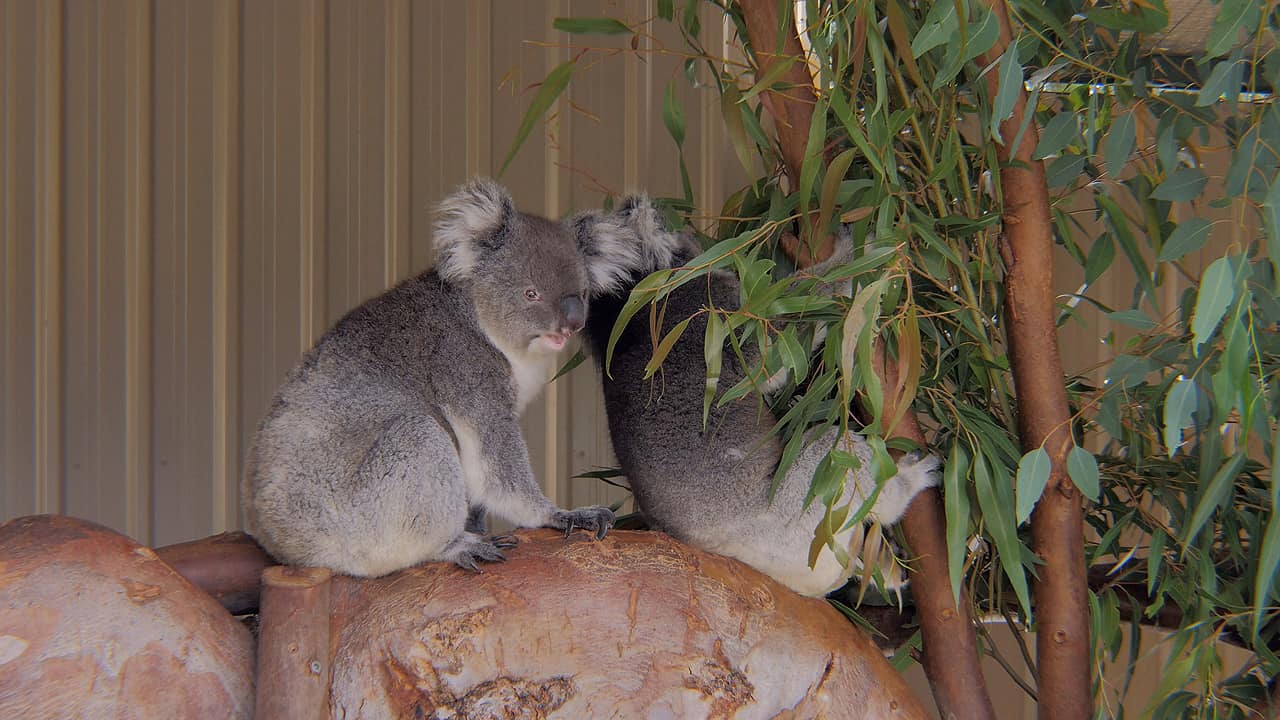Koalas from Caversham Wildlife Park WA Australia
Loading Video...
Koalas from Caversham Wildlife Park WA Australia
Meet the Koalas The Koala is commonly called a ‘Koala Bear’, however, this is incorrect. The Koala is a Marsupial; the female has a pouch. The baby, called a joey, is born after a very short gestation approximately 35 days and does all of its growing and developing inside the mum’s pouch for 6-7 months. The pouch is backwards-facing opposite to the Kangaroo type. The Koala has an average lifespan of approx 10 years in the wild. The Koala feeds on Eucalyptus leaves, which are not only very low in nutrition but also toxic to most animals. To cope with this diet, nature had equipped Koalas with a specialized digestive system which breaks down the toxins. The Koala also has a very slow metabolic rate. Koalas sleep for between 18 and 20 hours in every 24 hour period, as a way of conserving energy.
Caversham Wildlife Park introduces visitors to the unique selection of wildlife in Western Australia, from iconic native species to farm animals and rich birdlife.
The koala facts
Koala is about 60 to 85 cm – 24 to 33 inches long and weighs up to 14 kg – 31 pounds. Lives in the southern part of Western Australia, Victoria but only about half that in subtropical Queensland to the north. Virtually tailless, the body is stout and grey, with a pale yellow or cream-coloured chest and mottling on the rump. The broad face has a wide, rounded, leathery nose, small yellow eyes, and big fluffy ears. The feet are strong and clawed. The two inner digits of the front feet and the innermost digit of the hind feet are opposable for grasping. Because of the animals superficial resemblance to a small bear, the koala is sometimes called, albeit erroneously, the koala bear or tree bear.
The koala feeds very selectively on the leaves of certain eucalyptus trees. Koalas are generally solitary and individuals move within a home range of more than a dozen trees. If koalas become too numerous in a protected area, they defoliate preferred food trees and, unable to subsist on even closely related species, decline rapidly. To aid in digesting as much as 1.3 kg – 3 pounds of leaves daily that’s way too much. After bush fires in Australia is Koala on the list of species near extinction.
Koalas also communicate with each other by making a range of noises. The most startling and unexpected of these in such a seemingly gentle animal is a sound like a loud snore and then a belch.
Koalas from Caversham Wildlife Park WA Australia
Meet the Koalas -Daily Session Times in Caversham Wildlife Park
9.00am to 9.30am
11.30am to 12.00pm
2.30pm to 3.00pm
4.00pm to 4.30pm
David and Pat own and operate Caversham Wildlife Park with their son David & daughter Debbie.
When they purchased the park in 1988, the park housed a small collection of animals and birds on a modest 5 acre (2ha) property. A few years later, the park doubled in size, when the family purchased the adjoining property and the collection started to boom. In May 2003, the family designed and built a new park in Whiteman Park, once again, more than doubling in size.

0 Comments Be First to Comment